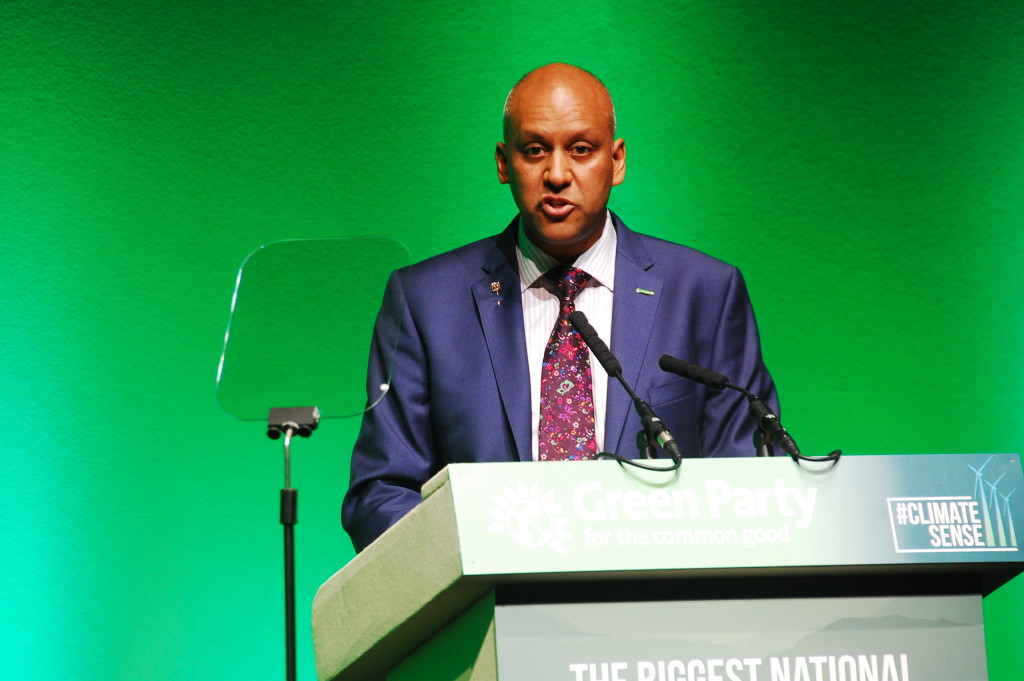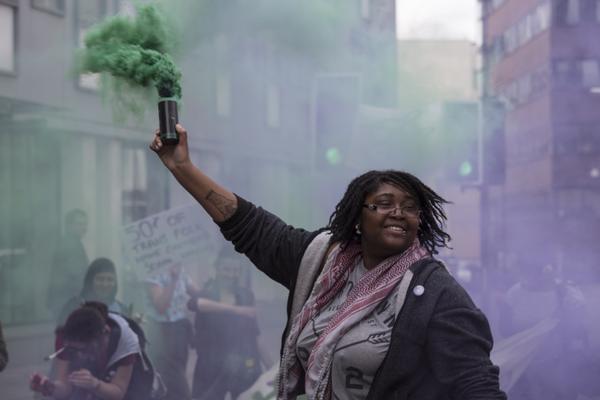Green GPEx Candidates – Male, pale and stale
Everybody knows that you don’t have to be a woman to know that sexism is wrong, a person of colour to know that racism is unacceptable nor identify as LGBTIQA+ to be intolerant towards homophobia. While this is the case, if you are not part of a particular community you will never understand the life those who are lead or the problems they face. You can sympathise – any humane person can sympathise. But you can’t empathise, because how can you possibly understand? How can you put yourself in a black man’s shoes if you are a white man and benefit from the privilege they lack?

Descriptive representation is the idea that elected representatives should represent the descriptive characteristics of the people they lead. Now to some this may seem like an extreme idea – to have a woman stand up for women and people of colour stand up for people of colour – but really it is not that drastic. Essentially it allows people from less privileged groups to see that, despite suffering as a result of their characteristics, they have the means to combat it. With descriptive representation, leadership are better aware of the needs of the people they serve, and as time grows on, ingrained oppression grows less prevalent as people begin to view those of every group in society as leaders rather than associating power with a very specific type of person. In my opinion, descriptive representation is how we combat the issue of people in positions of power failing to understand and truly grasp the problems the people they represent face.
When I saw the list of GPEx candidates, I wasn’t so much shocked as familiarly disappointed to see the lack of diversity. To be blunt: we are the Green Party, so why, from our leadership, could you easily mistake us for the White Party?
I don’t want to name names or throw individual people under the bus. Everyone who meets the membership requirements is entitled to stand as leader. But just like the Conservatives are seen as wealthy, pro-austerity and privately educated men, we are viewed as the party of the middle class white vegans. The people that I have met and associate with within the party don’t view us in that way, but from the outside that is how we come across. This is hardly going to change when all of the leadership candidates, and the vast majority of deputy and GPEx candidates, are white. Men are also a majority by a wide margin. What about the party makes us so unattractive to people of colour?

So many people of colour leave the party or don’t join in the first place due to this stigma and how they are mistreated, pushed aside and spoken over by white people in politics. My examples tend to reference sexism or racism, which is because I am a woman of colour – and an angry one at that. It is almost as if people of colour – especially woman of colour, of which there are no candidates standing this year – shy away from the top jobs within the Greens. I wonder why? Would a step forward be to include the liberation groups (that people mistakenly believe are exclusive cliques) on GPEx or GPRC? Do we need to re-open nominations to encourage a broader spectrum of candidates to stand? Should we start researching and publishing a breakdown of how underprivileged groups are represented in party leadership and introduce targets to improve this?
It is clear that a change is long overdue, and we can only hope that the candidates on that list will begin to take at least steps before fixing things because unless this happens the leadership elections this year represent only one thing – a glaring badge of embarrassment that as a supposedly progressive party meant to represent an alternative kind of politics we still perpetuate the same politics that most of us are sick of: male, pale and stale.

I am opposed to the idea of RON. My reasons are twofold.
1- We would miss out on being the only party out of the four holding a leadership election to hold ours in an organised and dignified manner, which is a massive win for us.
2- The nomination process is fair, and the lack of diversity is not a failure of the leadership nomination process, but of our structure, which often fails to empower local parties outside of the areas seen as the ‘metropolitan elite’.
The only way I can see out of this is for local party officers (and I include myself in this as I have not done enough either) to put in the yards to empower their members to impress without National Party assistance, and ensure that a more active and diverse slate is available in two years time, with a pedigree of having done more than just gripe online then sit back and feel impressed with themselves for having signed a petition that did nothing but hinder our party.
I feel that this came across more cynically than I intended. Regardless, the takeaway I’d like from from this is get up off your easy chair, put your electronic device down and get doing, and make the change you want to see. Disruption now can only hurt. Production now can only help.
We’re a party that thinks beyond the next election. Let’s show everybody what that means in practice.
Whilst I agree with this mostly I have a thought which is not so easily dealt with and that is do we have balance for those people with disabilities and those who are d/Deaf as candidates for GPEX and GPRC and the leadership team ?
I know we often find that disabled members of the Party don’t identify as disabled or d/Deaf but its very important that we should have a reasonable level of people with disabilities representing us.
We need to continue to strive to improve access to the Green Party for Disabled and Deaf people.
Do these candidates offer us a choice of Disabled and d/Deaf people to represent us?
I’m also a contender in the Deputy Leadership contest – I’m from a background outside the mainstream – a different race, sexuality, and ‘class’. I support the objective of increasing participation, but elections on merit.
Some strong points are made in the article.
Yes, we must encourage others, and open up the field and membership to more people. If elected, I, and I’m sure other candidates, will push for that.
It’s seems unwise to detract from them by using the populist ‘male, pale, and stale’. We must not devalue those who are already contributing. I don’t think using ‘pale’ as a derogatory term is appropriate, it’s an insult based upon skin tone. Citing ‘male’ with ‘stale’? Female candidates and those of different racial backgrounds should be encouraged strongly, but they don’t have a ‘type’ of politics any more than male people of light skin – see our Conservative leadership contest currently underway, or recent contests in countries across the world, for evidence of that.
One factor limiting any increased representation of BME groups within the party’s leadership is the demographic of the party’s activist base as a whole, even in the more diverse major cities. We had fewer BME parliamentary candidates than UKIP last year, and if our 2015 candidates are likely to be the members putting themselves forward for leadership positions in the future, this is likely to be repeated in 2 years time, and again in another 2 years time; unless candidate development is itself developed within the party. The same could be said of GPRC in particular, both in its own right and as a ‘source’ for potential leaders. This is something I am keenly aware of on a local level in Bristol, although we have made some progress with the election of Cleo Lake as a councillor.
You’re right, it’s very disappointing to see so little diversity. However, it’s a little bit offensive to fellow party members to describe them as “stale”. It’s also a very strong statement to claim that, for example, no white person can empathise with a black person experiencing racism. It leads to a dangerously reductive and divisive view of politics – one that Greens like Rosa Rajendran have questioned in her brilliant blog entries on class and poverty.
As for how to address this very serious problem, over the years I’ve seen a lot of hand wringing about diversity in the party, and few effective measures to address it. By far the most effective interventions have been around mentoring, whether the hard work done over many years by Green Party Women, or the more recent work under excellent schemes like 30 under 30. During my time as joint co-ordinator of the London regional party I, along with other officers, have reached out to encourage and support women and BME candidates in particular to stand for selection during the local, General and London elections, and for officer posts. Where we’ve put the time and effort in, it has usually resulted in some excellent candidates coming forward.
It would be interesting to know how many people groups like Greens of Colour are now managing to engage, and whether they encouraged members from their own ranks to stand. It would also be interesting to find out why people involved in those groups didn’t stand – if there are cultural or institutional barriers we could address. For my own part I will think about talented members I could encourage either to put themselves forward for co-option, if there are vacancies, or for election next year.
Tom
I think it is not true that “no white person can empathise with a black person experiencing racism ” but it is probably true that no white person can fully realise what it feels like to be black and experiencing racism
Rob
Rob, yes, absolutely.
It was intended to get a reaction. Yes, no white person can understand racism. But as a black women I can comment on the lack of diversity in the Greens and so can you as a white man. I think the work you did sounds brilliant there needs to be more people just as enthusiastic about improving representation.
Jemima
It was intended to get a reaction. Yes, no white person can understand racism. But as a black women I can comment on the lack of diversity in the Greens and so can you as a white man. I think the work you did sounds brilliant there needs to be more people just as enthusiastic about improving representation.
Also rob empathy is fully realising what it is to be black and experience racism essentially putting yourself in a person of colour’s “shoes”. Which as a white person you
can’t do. Sympathy is different.
Jemima
Regarding that photograph, that activist’s name is Shanice McBean-a good friend of mine.
Thanks, have updated 🙂
Fully support adding liberation groups to GPEx and GPRC, plus the re-opening of nominations if diversity targets not met.
If anything it seems like this is a harder problem to fix in the Green Party simply because most members see themselves as progressive. The issue can’t be with their policies or structures, because they couldn’t be progressive if they were. In reality this list of candidates shows that we need real action, and soon, because if people that we’d claim to represent aren’t present in our leadership then we really aren’t representing them.